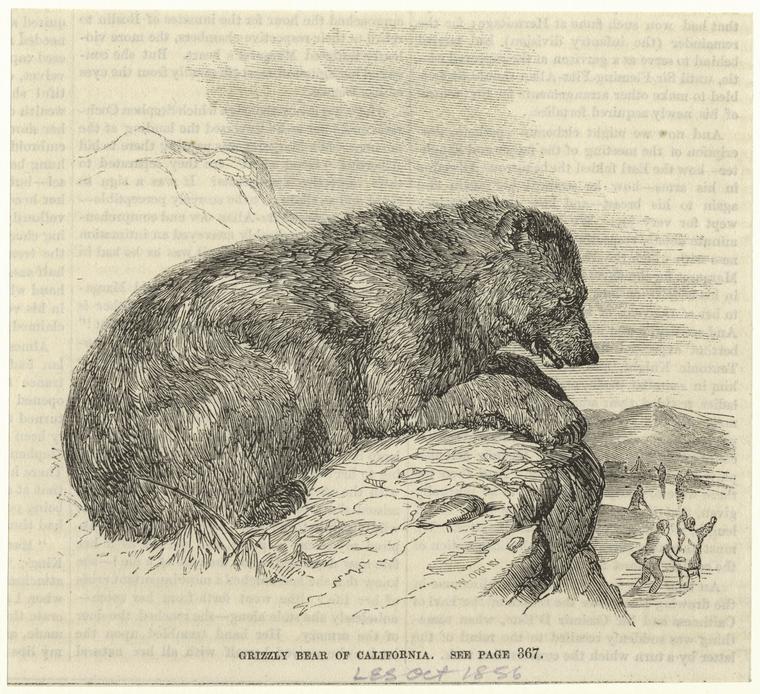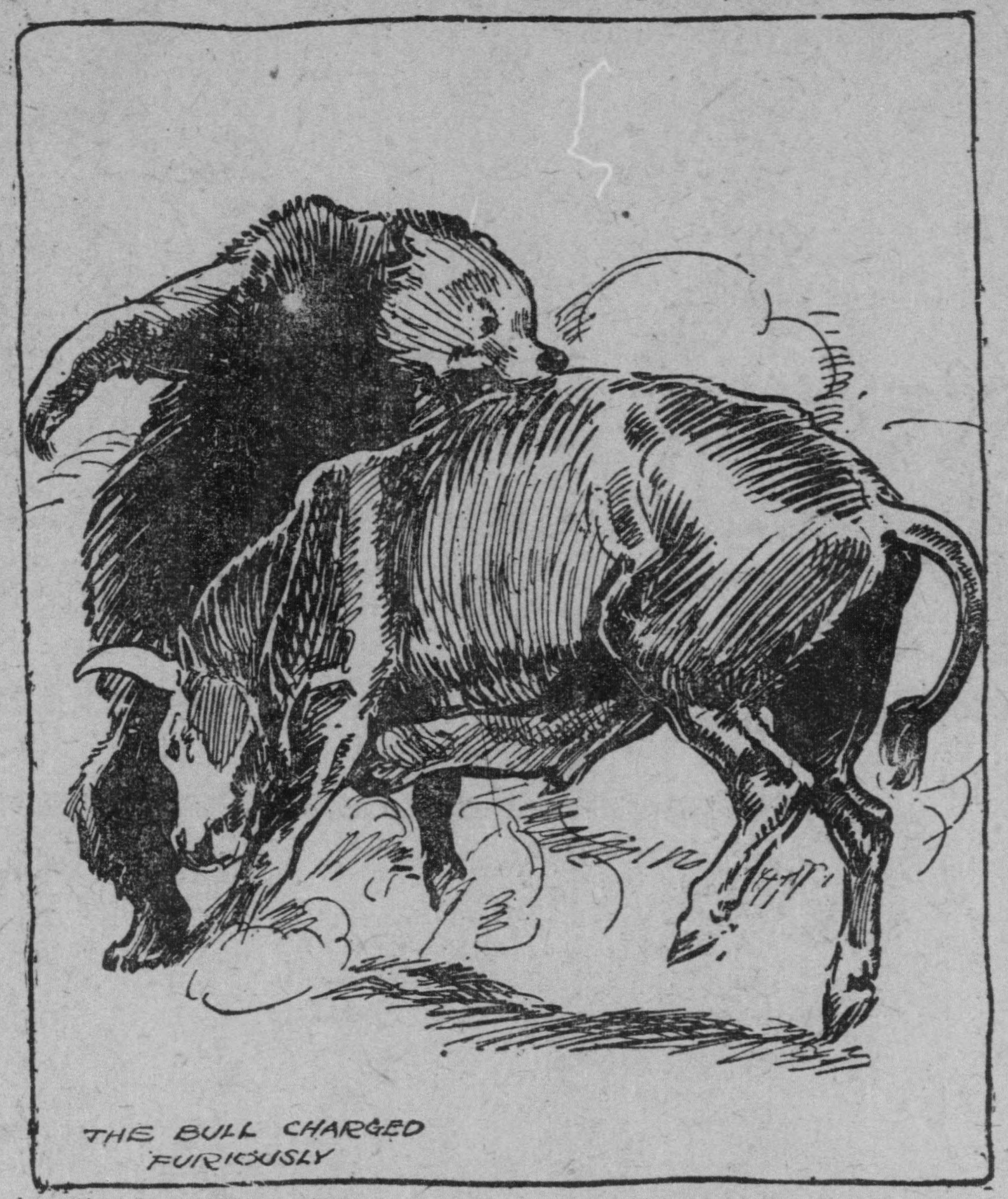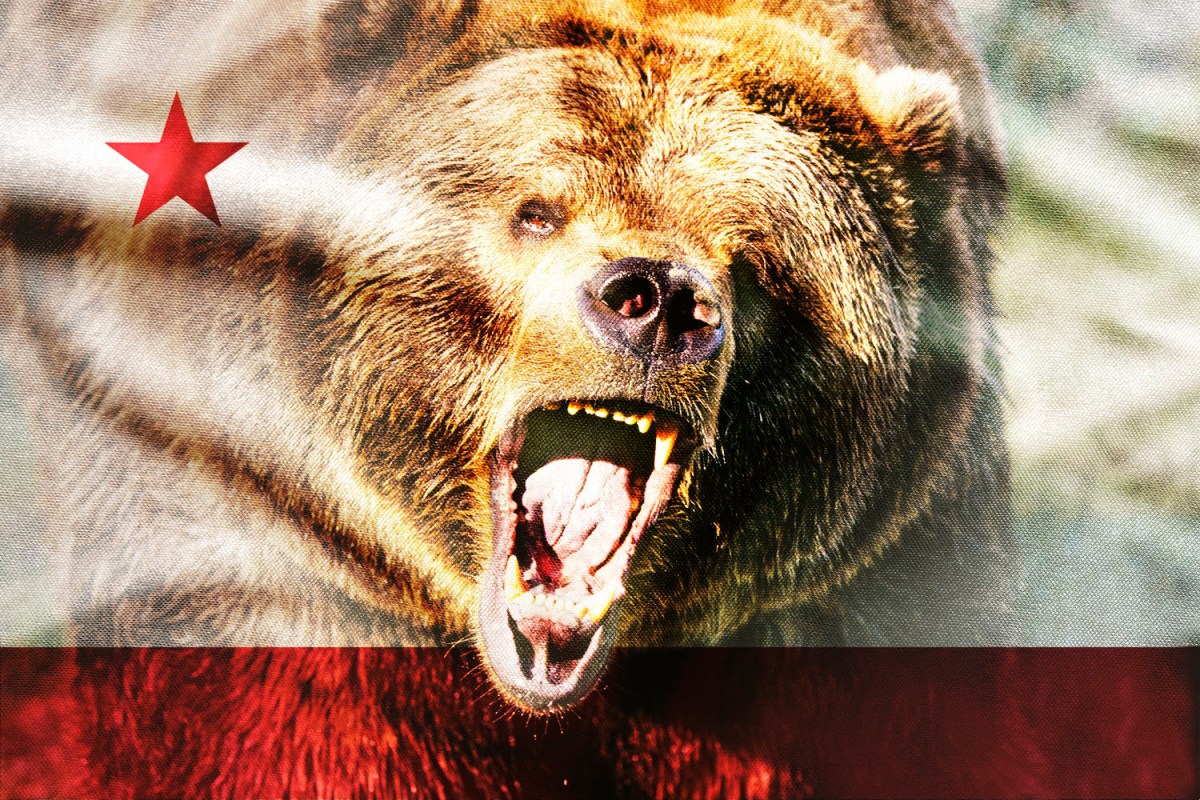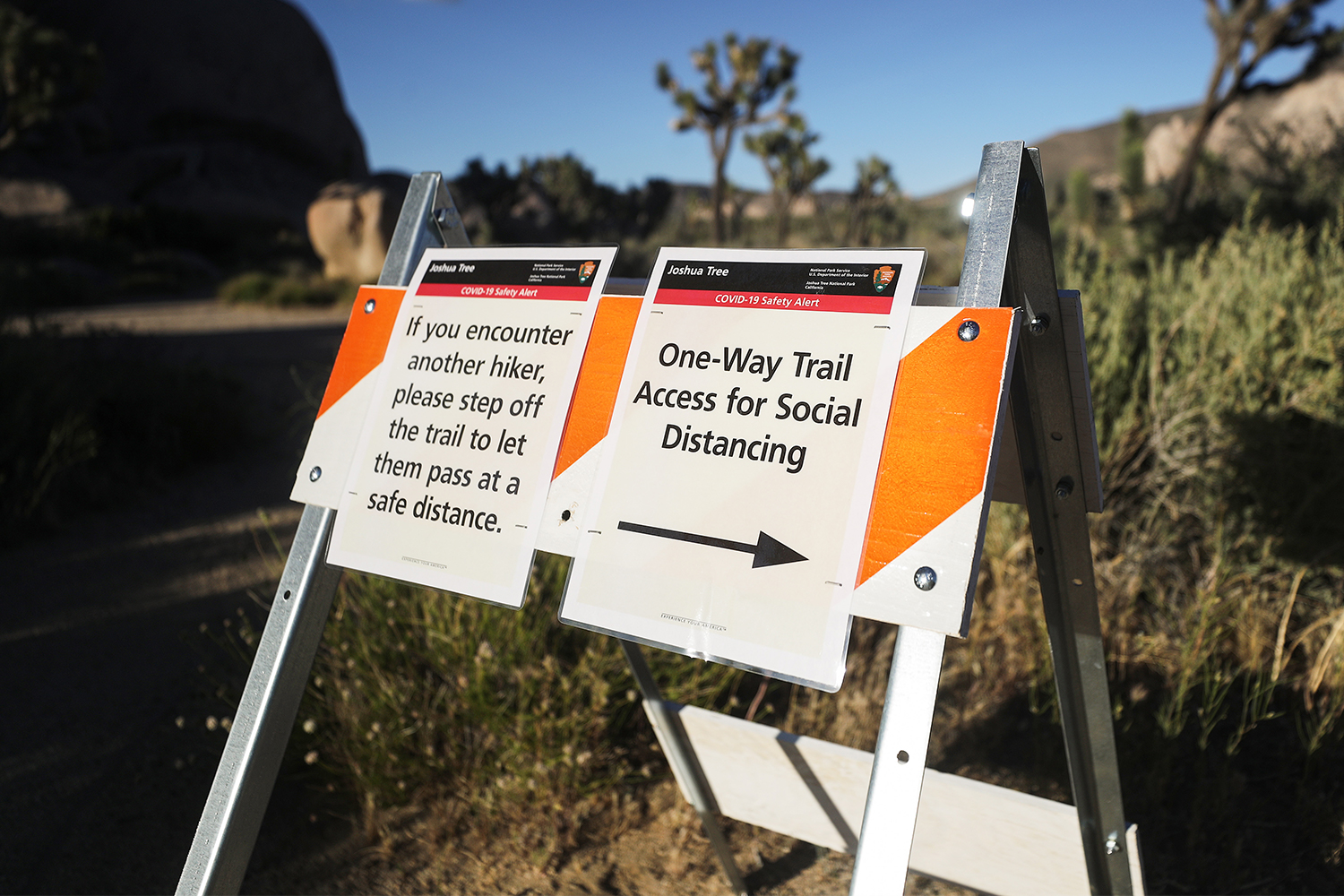Had Monarch the Bear lived a few hundred years earlier — before the Gold Rush, before William Randolph Hearst challenged reporter Allen Kelly to trap (or buy, as it turned out) the last of the free California grizzlies — he would likely have lived a life of, if not precisely peaceful, then at least harmonious coexistence in this once-wild place, revered by indigenous California people and at liberty to roam the proto-state from the Sierras to the Pacific coast. He would not have been captured, chained and gagged, transported by train to San Francisco, and then paraded before thousands at the 1894 World’s Fair in Golden Gate Park.
Instead, the bear who surrendered his image to our state flag, his fading pelt to the California Academy of Sciences and his bones to the Berkeley’s Museum of Vertebrate Zoology was euthanized in 1911. He died after 22 years in captivity, an object of dwindling fascination and a potent symbol of loss, one of some 10,000 California grizzlies that would become extinct within 80 years of James Marshall’s discovery of gold in the bed of the American River. If he was not exactly the last of the California grizzlies — sightings continued, fitfully, into the 1920s — Monarch would nonetheless become synonymous with a species most conspicuous by its absence.
And yet, more than 100 years after his death, Monarch might also be the symbol of its rebirth.

Peter Alagona has studied California’s lost animals for two decades, as an associate professor of environmental studies at U.C. Santa Barbara and the author of After the Grizzly: Endangered Species and the Politics of Place in California. The book in fact focuses not on the fall of the titular bear but on the travails of the California condor, desert tortoise, Delta smelt and San Joaquin kit fox. In their stories — as with the California grizzly — Alagona aligns these imperiled species with larger arguments about imperiled habitats and a wider natural world under parallel threat.
Alagona, of course, wasn’t the only one thinking hard about this: In June 2014, as part of a wider awareness campaign, the Center for Biological Diversity petitioned the U.S. Fish & Wildlife Service to “meet its mandatory duty to develop a recovery plan for the grizzly bear (Ursus arctos horribilis) … and to ensure full recovery of the species across its native range in the United States.” In other words: to bring the grizzly back to California (as well as to specific regions in Utah, Arizona and New Mexico).
Alagona thought it was a provocation worth considering. “What the petition was trying to do was force the government to recognize that these animals were once much more widely spread,” he tells InsideHook. (Today, grizzly bears roam “just a few pockets in the Rocky Mountains — roughly four percent of their historic range in the lower 48 states,” according to the Center for Biological Diversity.) The petition failed. “These federal agencies said, ‘We don’t want to do this right now’ — and at that point, we got wind of this at UCSB, and in 2016 I brought together a group here to start to do some of that work — to start to think seriously about what it would mean to bring the species back, and what it meant that it had disappeared in the first place.” The California Grizzly Research Network was born.
Alagona repeatedly stresses that third word: his interdisciplinary organization’s purpose is not advocacy, he says, but research. “People often think we’re an advocacy group, but we’re not,” he says. Other developments, he says, made it the right time for an effort like this. “There were a couple other contexts for why we got started on this when we did,” Alagona says. “Wolves had been expanding their range in the west since the 1990s, and in 2011 we got our first wolves in California, wolves who’d traveled from the northern Rockies into Washington and Oregon — so California has already seen some repatriation of large, lost carnivores. There were also a number of studies that came out of Europe on large brown bears, which are the same species as what we call grizzlies. Along with wolves, wolverines and lynx, all four of them have been expanding their ranges and their numbers even in places you might not expect, like Italy and Spain. TThat suggested to us that even in a state like California, with 40 million people, we could do it if we wanted to.”
Whether people want to or not is one of the many questions the group is now investigating. Earlier this year, Alagona dispatched post-doctoral researcher Alex McInturff to Bishop, in the Eastern Sierras, to gauge local attitudes around grizzly reintroduction — an initiative unavoidably restructured when COVID-19 scuppered plans for focus groups and on-site interviews. While McInturff’s in-person research has been pushed to 2021, he’s focusing on other grizzly-related issues, like “the theory around environmental justice and what it would have to say about large carnivore reintroductions” and various mapping projects intended to better understand the levers shaping public opinion around the return of grizzlies to California.
“We’re near Mammoth Lakes, which has an incredible and unique history with black bears, and managing the interactions with them,” McInturff says. (He notes that within the field, “human-wildlife conflict” has largely been recontextualized as “human-wildlife interaction.”) “In some cases, tolerance can look like a livestock producer being willing to use flashing lights or reinforced fencing to protect their livestock. In some cases it can look like people organizing locally in favor of or in opposition to a particular animal — or, more notoriously, the ‘shoot, shovel and shut-up’ mentality. Illegal killings have really derailed reintroduction programs elsewhere in the world; some recent studies suggest that the number of illegal killings is higher than people previously had thought, and so it can actually have a really big effect on the potential success of a reintroduction.”
One element that’s shaped tolerance in Mammoth Lakes is a concerted effort to market local black bears as furry native sons. “One of the really effective strategies in Mammoth that’s helped people there exist with the bears is that they’ve subtly worked to make them ‘their’ bears,” McInturff says. “If you look at the bumper stickers in Mammoth, they say, ‘Don’t feed our bears.’ There’s a sense of pride and ownership and inclusiveness of the bears as part of the identity and landscape there. If people perceive grizzlies as ‘our’ bears, as part of ‘my’ backyard and my landscape, something that makes it Californian, then you’re going to see a lot of support.”
“We know that tolerance for large carnivores is generally increasing,” Alagona says. “California has seen its population of black bears roughly quadruple, and there’s now a population approaching 40,000 — certainly more than 30,000. All of these factors presented an opportunity. Grizzlies are part of California: You’ve got the UCLA Bruins, they’re on our state flag — they’re everywhere here, except in the actual flesh.”

Alagona’s group — researchers and ethicists, scientists investigating issues like the genetic similarities between California grizzlies and other populations of grizzlies, an effort led by evolutionary molecular biologist Beth Shapiro at UCLA — are preparing their findings for release and public discussion in 2024. Not by coincidence, that year marks 100 years since the final California grizzly sighting, in Sequoia National Park. Alagona believes they are prompting a conversation now overdue. “I believe that a small group of people, in a very undemocratic way, took it upon themselves to eradicate animals that belonged here — an animal that many First Nations people in the state consider to be their literal kin,” he says. “In terms of feasibility, I’ve learned through studying this that [the reintroduction of the grizzly] is actually not crazy. It’s a choice. If we decide to go down this road [of reintroduction], it would require time, money, dedication and some risk. But our perspective is that if something is a choice, you should have a civil, evidence-based public conversation about it.”
Alagona may be well attuned to the possibilities of a shifting public discourse because his own has evolved since 2016. “I started this project thinking it was about bears. Turns out that it was only partly about bears,” he says. “The bear is such a vehicle for everything we bring to it. For me, this is about coexistence: How we can live with other species on an increasingly crowded, polluted, hot planet. And then it’s about imagination: When I started this project, I thought it was crazy. Now I know I was closed off to it. This bear means so many different things to so many different people. It provides a vessel, a way of talking about the future in ways that seem really hard to do right now. This is really about pushing people to imagine an alternative possible future, one that’s better than the ecological apocalypse that seems laid out in front of us. If we can bring the grizzly back to California, what else can we do?”
In those words, we hear an echo of Allen Kelly’s prescient, and not unrepentant, report from Monarch’s last days as a free bear, as he sought his quarry in the San Gabriel Mountains: “I have yet to hear on any credible authority of a malevolent bear, or, for that matter, any other wild animal in North America whose disposition and habit is to seek trouble with man and go out of its way with the deliberate purpose of attacking him,” Kelly wrote, in his memoir, Bears I Have Met — And Others. “I was forced to recognize the plain truth that the only mischievous animal, the only creature meditating and planning evil on that mountain was a man with a gun. I was the only really dangerous and unnecessarily animal in the woods, and all the rest were afraid of me.”
This article was featured in the InsideHook SF newsletter. Sign up now for more from the Bay Area.





















